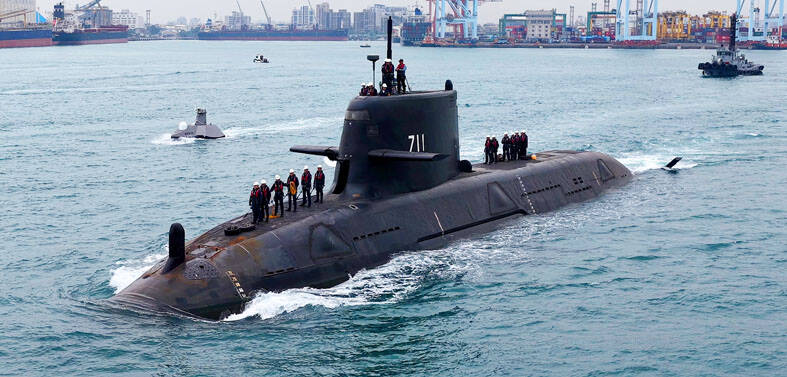Immediate cardiopulmonary resuscitation (CPR) could double the chance of survival for children who experience out-of-hospital cardiac arrest, a study released on Thursday last week showed.
The study by Linkou Chang Gung Memorial Hospital also showed that CPR for children having cardiac arrests could prevent brain damage caused by a lack of oxygen.
A team at the hospital studied 152 patients younger than 18 from 2005 to 2016 who experienced out-of-hospital cardiac arrests and were later admitted to the hospital, pediatric general medicine director Lee Jung (李嶸) told a news conference.
The study showed that 15 patients received CPR prior to being admitted to the hospital, and of that group, there was a 60 percent chance to restart the heart at the hospital, he said.
For the other cases in which patients received no CPR prior to being admitted, there was a 32 percent chance of restarting the heart, he added.
Many parents rush their child to the hospital without first trying CPR, because they do not understand its importance or they lack the confidence to perform it, but the immediate use of CPR doubles the chance of survival, Lee said.
The study included an equal number of male and female patients, and 47 percent were younger than one.
Out-of-hospital cardiac arrests in children occur on average 1.5 times every month, among which 54 percent are due to choking and up to 76 percent occur at home, it showed.
The study found that only one-third of the patients regain heartbeats after reaching the hospital, 14 percent survive and 5 percent function normally afterward.
Complications resulting from a lack of oxygen to the brain could increase the risks of hindered brain development and even cerebral palsy, hospital attending physician Wu Chang-teng (吳昌騰) said.
Permanent damage could occur if the brain is deprived of oxygen for more than six minutes, and CPR using external force to supply the brain with more blood and oxygen could prevent the situation from happening, he said.
Key points to focus on when performing CPR include quick and hard compressions, the rebound of the chest and continuity of the compressions, Wu said.
Compressions should be administered at a rate of at least 100 per minute, and at a depth of about one-third of the chest capacity each time, he said, adding that the rising of the chest signals the timing for the next compression, and the break period between compressions should not exceed 10 seconds.
Deliver two breaths to the patient’s mouth after each set of 30 compressions, and if the heart does not restart, repeat the cycle until it is beating or an ambulance arrives, he said.

US climber Alex Honnold is to attempt to scale Taipei 101 without a rope and harness in a live Netflix special on Jan. 24, the streaming platform announced on Wednesday. Accounting for the time difference, the two-hour broadcast of Honnold’s climb, called Skyscraper Live, is to air on Jan. 23 in the US, Netflix said in a statement. Honnold, 40, was the first person ever to free solo climb the 900m El Capitan rock formation in Yosemite National Park — a feat that was recorded and later made into the 2018 documentary film Free Solo. Netflix previewed Skyscraper Live in October, after videos

NUMBERS IMBALANCE: More than 4 million Taiwanese have visited China this year, while only about half a million Chinese have visited here Beijing has yet to respond to Taiwan’s requests for negotiation over matters related to the recovery of cross-strait tourism, the Tourism Administration said yesterday. Taiwan’s tourism authority issued the statement after Chinese-language daily the China Times reported yesterday that the government’s policy of banning group tours to China does not stop Taiwanese from visiting the country. As of October, more than 4.2 million had traveled to China this year, exceeding last year. Beijing estimated the number of Taiwanese tourists in China could reach 4.5 million this year. By contrast, only 500,000 Chinese tourists are expected in Taiwan, the report said. The report

Temperatures are forecast to drop steadily as a continental cold air mass moves across Taiwan, with some areas also likely to see heavy rainfall, the Central Weather Administration (CWA) said. From today through early tomorrow, a cold air mass would keep temperatures low across central and northern Taiwan, and the eastern half of Taiwan proper, with isolated brief showers forecast along Keelung’s north coast, Taipei and New Taipei City’s mountainous areas and eastern Taiwan, it said. Lows of 11°C to 15°C are forecast in central and northern Taiwan, Yilan County, and the outlying Kinmen and Lienchiang (Matsu) counties, and 14°C to 17°C

STEERING FAILURE: The first boat of its class is experiencing teething issues as it readies for acceptance by the navy, according to a recent story about rudder failure The Hai Kun (海鯤), the nation’s first locally built submarine, allegedly suffered a total failure of stern hydraulic systems during the second round of sea acceptance trials on June 26, and sailors were forced to manually operate the X-rudder to turn the submarine and return to port, news Web site Mirror Daily reported yesterday. The report said that tugboats following the Hai Kun assisted the submarine in avoiding collisions with other ships due to the X-rudder malfunctioning. At the time of the report, the submarine had completed its trials and was scheduled to begin diving and surfacing tests in shallow areas. The X-rudder,